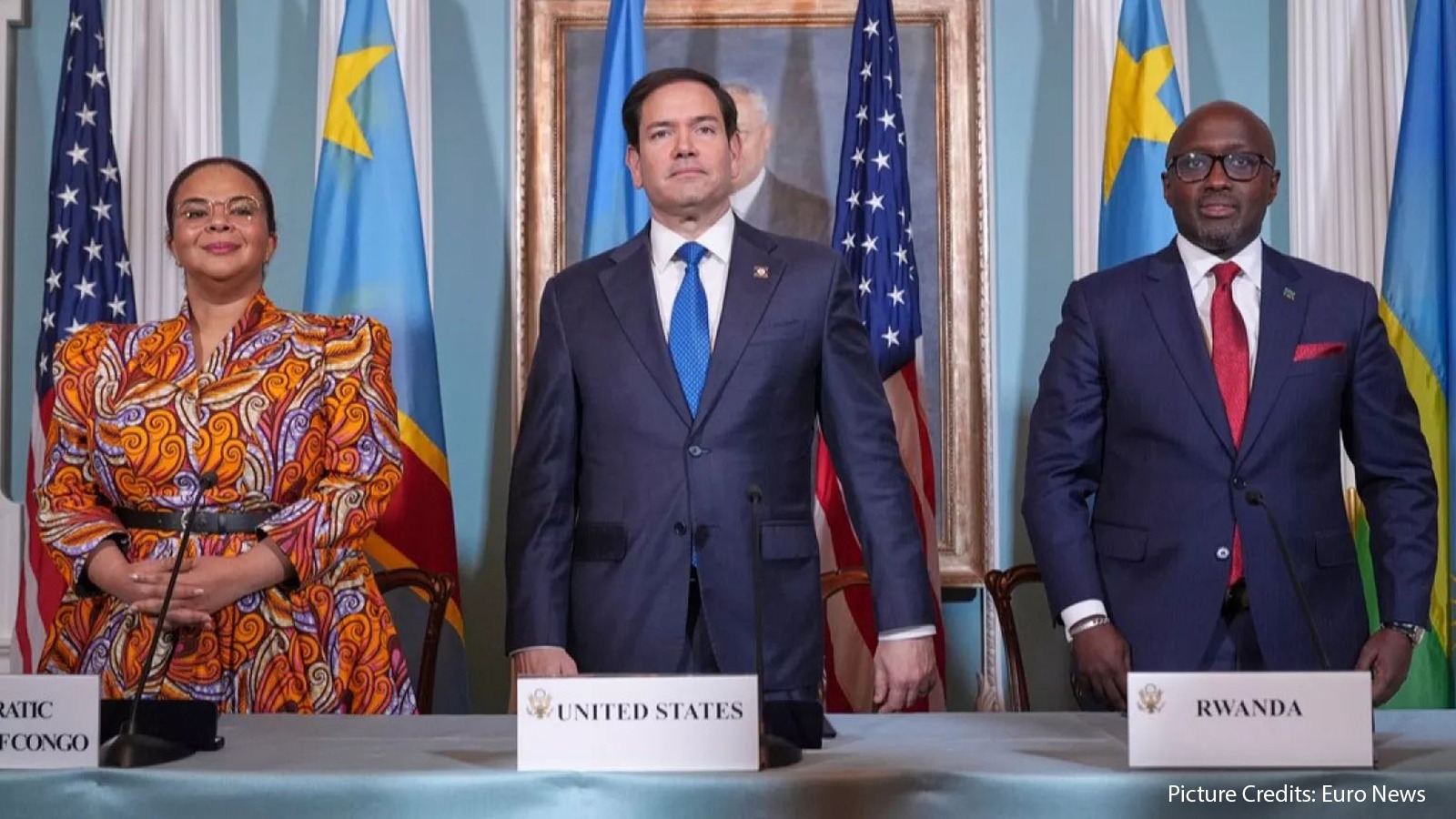The Democratic Republic of Congo (DRC) and Rwanda have signed a draft peace agreement in Washington, DC, with support from the U.S. government. The final peace deal is to be signed on 27 June.
The deal follows three days of talks focused on political, security, and economic issues. The agreement includes steps to: disarm armed groups, reintegrate fighters, help refugees and displaced people return home.
The conflict driven by competition over mineral wealth, escalated in early 2025 when M23 rebels, allegedly backed by Rwanda captured Goma and later Bukavu. Rwanda denies the accusation. The region has witnessed widespread killings, displacement, and rights abuses, with international groups accusing all parties of violations.
Since then, the conflict has killed thousands and displaced hundreds of thousands. Human rights groups report that rebels, the army, and allied militias have all committed serious abuses, including torture and killing of civilians.
Strategic Importance of DRC’s Critical Minerals
DRC is rich in cobalt, copper, gold, and lithium—minerals that are essential for the global supply chain, especially in clean technologies. As the world shifts toward sustainable energy and electric vehicles, the demand for critical minerals is surging, making the region strategically important.
However, this mineral wealth has also led to a 𝐫𝐞𝐬𝐨𝐮𝐫𝐜𝐞 𝐜𝐮𝐫𝐬𝐞, fuelling prolonged conflict and instability rather than development.
The recent draft peace agreement between DRC and Rwanda offers a glimmer of hope. But the big question remains: Will it lead to real peace?
𝐃𝐢𝐬𝐜𝐥𝐚𝐢𝐦𝐞𝐫: This article has references to official and open sources, including Al Jazeera.






